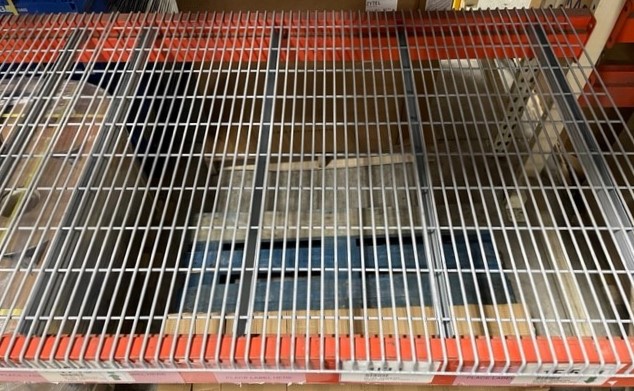Installing wire mesh under a deck is one of the simplest, most effective ways to protect your outdoor space. It keeps out animals, supports landscaping fabric or skirting, improves safety, and can even extend the life of your deck structure.
In this guide, you will learn exactly how to install wire mesh under a deck the right way. From planning and measuring, to choosing the right material, to fastening it securely, every step is broken down so a DIY‑minded business owner can follow along with confidence.
Benefits of installing wire mesh under a deck
Before picking up tools, it helps to understand why wire mesh under a deck is worth the effort. Knowing the benefits will also influence which type of mesh and installation method you choose.
- Pest and animal control
One of the most common reasons to install wire mesh under a deck is to keep critters out.
- Deters raccoons, skunks, and opossums from nesting
- Prevents rodents like mice and rats from burrowing
- Reduces the chance of snakes and other wildlife hiding under the deck
When you use the right under‑deck wire mesh for animals and seal gaps properly, you essentially create a barrier that still allows airflow.
- Better ventilation and moisture control
Unlike solid panels, wire mesh under decking allows air to circulate freely.
- Helps wood joists and beams dry out faster after rain
- Reduces mold and mildew growth
- Prevents moisture‑related rot and structural damage over time
Proper ventilation is critical if you want your deck to last for many years.
- Cleaner, safer outdoor space
Wire mesh can:
- Support landscape fabric or gravel to reduce weed growth
- Keep debris from blowing underneath and accumulating
- Make the area safer for children and pets if they access the underside
If you plan to add under‑deck skirting or lattice, installing mesh first gives you extra stability and protection.
- Improved appearance and property value
When paired with skirting, stone, or lattice, wire mesh under a deck helps create a crisp, finished look. It hides unsightly structural elements while still allowing you access for inspection and maintenance.
Step 1: Plan your wire mesh under‑deck project
Proper planning sets up a smooth installation. Take time to assess the site and your goals before you buy any materials.
Measure the deck perimeter and height
Walk around the entire deck and:
- Measure the total linear footage of the deck perimeter
- Measure the height from the ground to the bottom of the deck frame at several points
- Note any slopes, especially if your yard is not level
Write down these measurements so you can calculate how much hardware cloth or wire mesh you need.
Decide your primary purpose
Ask what you want your under‑deck wire mesh to do:
- Keep out animals (you’ll need smaller openings and stronger material)
- Support landscaping fabric and gravel
- Act as a base behind decorative skirting
- Improve ventilation and drainage
Your purpose determines the mesh size, gauge, and whether you need to dig a trench or extend mesh below grade.
Check local building codes and HOA rules
Before you install anything:
- Verify local building codes regarding under‑deck enclosures
- Ask your HOA (if applicable) about restrictions on deck skirting or materials
- Confirm whether any permits are required for structural modifications
This step can save time and potential rework later.
Step 2: Choose the right wire mesh for under your deck
Now that you understand the project scope, you can choose the best material.
Hardware cloth vs. welded wire mesh vs. chicken wire
Common options for installing wire mesh under a deck include:
- Hardware cloth
- Small openings, often 1441 to 1221 inch
- Excellent for rodent and pest control
- Available in galvanized or stainless steel
- Welded wire mesh
- Larger openings, like 1–2 inches
- Stronger and stiffer, good for larger animals
- Works well behind decorative skirting
- Chicken wire (poultry netting)
- Budget‑friendly but less durable
- Larger flexible openings
- Best used only as a secondary barrier, not primary animal control
For most business owners, galvanized hardware cloth with tfrac{1/4} – tfrac{1/2} inch openings is ideal for under‑deck installation.
Material and coating options
Choose a mesh that stands up to weather:
- Galvanized steel: Affordable, rust‑resistant, good for most climates
- Stainless steel: Superior corrosion resistance, higher cost
- PVC‑coated mesh: Extra protection and a cleaner appearance
If you live in a coastal or very humid area, stainless or PVC‑coated mesh may be worth the investment.
Recommended specs for under‑deck mesh
For a balance of strength and workability:
- Opening size: 1441 – tfrac{1/2} inch
- Gauge: 19–16 gauge for hardware cloth (lower number = thicker)
- Roll height: Close to your deck height, or slightly taller so you can bury a few inches
Step 3: Gather tools and materials
Having everything ready makes it easier to install wire mesh under a deck in one go.
Materials
- Hardware cloth or welded wire mesh rolls
- Pressure‑treated 2×2 or 2×4 lumber (for framing, if needed)
- Galvanized staples or exterior‑grade screws with washers
- Landscape fabric (optional, for weeds)
- Gravel or crushed rock (optional, for drainage)
Tools
- Tape measure and marker
- Work gloves and safety glasses
- Wire cutters or tin snips
- Staple gun (manual, electric, or pneumatic)
- Drill/driver with exterior screws
- Shovel (if you plan to bury the mesh)
- Level and line chalk (optional but helpful)
Step 4: Prepare the area under the deck
Before installing any under‑deck wire mesh, prep the ground and structure.
Clear debris and vegetation
- Remove leaves, branches, and any stored items
- Pull or trim weeds and overgrown grass
- Rake the soil so it’s fairly smooth
If you plan to bury the mesh to stop burrowing animals, identify where you will dig a shallow trench around the deck perimeter.
Inspect the deck structure
This is a good time to:
- Look for rot, loose boards, or damaged joists
- Check posts and beams for insect damage
- Tighten loose screws or replace corroded fasteners
Fixing issues now is much easier than after you close off the underside with mesh and skirting.
Add landscape fabric or gravel
For better moisture control and weed prevention:
- Lay landscape fabric over the soil, overlapping seams by at least 6 inches
- Spread a 1–2 inch layer of gravel or crushed rock on top for drainage
The wire mesh will help hold everything in place and keep animals from disturbing it.
Step 5: How to install wire mesh under a deck (step‑by‑step)
Now comes the core of the project: fastening the mesh securely under and around the deck.
Option A: Vertical installation around the deck perimeter
This is the most common method for installing wire mesh around the base of a deck.
- Mark your line
- Decide where the top of the mesh will attach (usually the band joist or rim joist).
- Use a chalk line or level to mark a straight line around the perimeter.
- Dig a shallow trench (recommended for pests)
- Dig a trench 4–6 inches deep along the deck perimeter.
- The mesh will extend into this trench and either go straight down or bend outward in an L‑shape to deter digging animals.
- Measure and cut mesh panels
- Measure each section between posts.
- Cut the wire mesh slightly longer than needed so you can overlap sections by 2–4 inches at seams.
- Attach mesh to the deck frame
- Starting at one corner, position a panel of mesh against the rim joist.
- Use galvanized staples or screws with washers to secure it every 4–6 inches along the top edge.
- Keep the mesh tight and straight as you fasten it.
- Secure the sides and bottom
- Fasten along vertical supports or posts to prevent sagging.
- Extend the mesh into the trench and either:
- Run it straight down and backfill, or
- Bend it outward in an L‑shape, then backfill with soil or gravel.
- Overlap and seal seams
- Overlap adjacent mesh sections by a few inches.
- Wire them together or double‑staple through both layers to eliminate gaps.
- Finish corners and edges
- Wrap mesh around corners instead of cutting right at the edge to avoid weak spots.
- Trim excess carefully with wire cutters and bend sharp ends inward.
Option B: Horizontal installation under joists
If you want a barrier directly under the deck surface (for example, to support an under‑deck drainage system or catch debris), you can install wire mesh under deck joists.
- Add support framing
- Fasten 2×2 or 2×4 lumber along the inside of the rim joists to create a lip.
- Install cross supports as needed so the mesh has continuous edges to attach to.
- Cut mesh to fit between joists
- Measure the width between joists and the length of each bay.
- Cut pieces of hardware cloth slightly wider so you can staple to both sides.
- Fasten mesh to framing
- Starting at one end, hold the mesh tight and staple every 4–6 inches.
- Work your way across, keeping tension to avoid sagging.
- Overlap seams
- Overlap adjacent pieces by at least 2–3 inches.
- Tie them together with wire or add extra staples through both layers.
This horizontal method is more labor‑intensive but can be useful when building an under‑deck storage area or drainage system.
Step 6: Add skirting or finishing touches
Once the wire mesh under the deck is installed, you can decide how to finish the exterior.
Add decorative skirting
Popular options to go over the mesh include:
- Vinyl or composite lattice panels
- Wood planks installed vertically or horizontally
- Metal panels or decorative screens
Attach skirting to a simple wood frame in front of the mesh so you can remove sections later if needed.
Create an access door or panel
Always plan for future access:
- Build a small hinged door or removable panel in the skirting
- Make sure the wire mesh behind it can also open or be detached
- Use barrel bolts or latches to keep it secure
This allows you to inspect the underside, run utilities, or perform repairs later.
Double‑check for gaps
Walk the entire perimeter and:
- Look for gaps larger than tfrac{1/4} inch
- Seal any gaps with additional mesh or fasteners
- Bend in or clip sharp edges to avoid injuries
Attention to these small details is what makes under‑deck wire mesh installation truly effective.
Maintenance tips for wire mesh under a deck
Once your mesh is installed, keep it performing well with simple maintenance.
- Inspect it at least once a year for rust, holes, or loose fasteners
- Trim vegetation so plants do not grow into or through the mesh
- Clear leaves and debris that pile up against the skirting
- Touch up or replace corroded fasteners as needed
With basic care, high‑quality wire mesh can last for many years outdoors.
FAQs
1. What is the best wire mesh to use under a deck?
For most homes, galvanized hardware cloth with tfrac{1/4} to tfrac{1/2} inch openings is best under a deck. It is small enough to keep out mice and other pests, strong enough to resist damage, and still allows excellent airflow and drainage.
2. How deep should wire mesh go into the ground under a deck?
For effective animal control, extend the wire mesh 4–6 inches into the ground. For extra protection against burrowing animals, bend it outward in an L‑shape at the bottom and bury that horizontal section under soil or gravel.
3. Can you install wire mesh under an existing deck?
Yes, you can install wire mesh under an existing deck. You will need to clear the area, measure the perimeter, and attach mesh to the rim joist, posts, or additional framing. In some cases, you may need to crawl under the deck or remove a few boards to reach tight spots.
4. Do you need wire mesh if you already have deck skirting?
Deck skirting alone often has gaps large enough for animals and does not always stop burrowing. Installing wire mesh behind skirting adds a hidden barrier that keeps pests out while preserving the decorative look of the skirting.
5. How much does it cost to install wire mesh under a deck?
Costs vary based on deck size and material quality, but for DIY installations, most business owners spend a few hundred dollars on mesh, fasteners, and basic supplies. Professional installation will cost more, especially if framing or excavation is required.
Conclusion
When installed correctly, wire mesh under a deck transforms the space from a vulnerable gap into a protected, well‑ventilated, and tidy area. By choosing the right hardware cloth, carefully measuring and cutting sections, securing them to the frame, and sealing edges and seams, you can effectively keep pests out, reduce moisture problems, and improve your deck’s appearance.
If you are planning a larger outdoor upgrade—like new skirting, an under‑deck storage area, or a full deck remodel—consider combining those projects with a proper under‑deck mesh installation.
Looking for more step‑by‑step home improvement guides or professional help with planning your outdoor projects? Subscribe for updates, share this guide with a fellow DIYer, or reach out to a local contractor who can bring your under‑deck enclosure vision to life.



